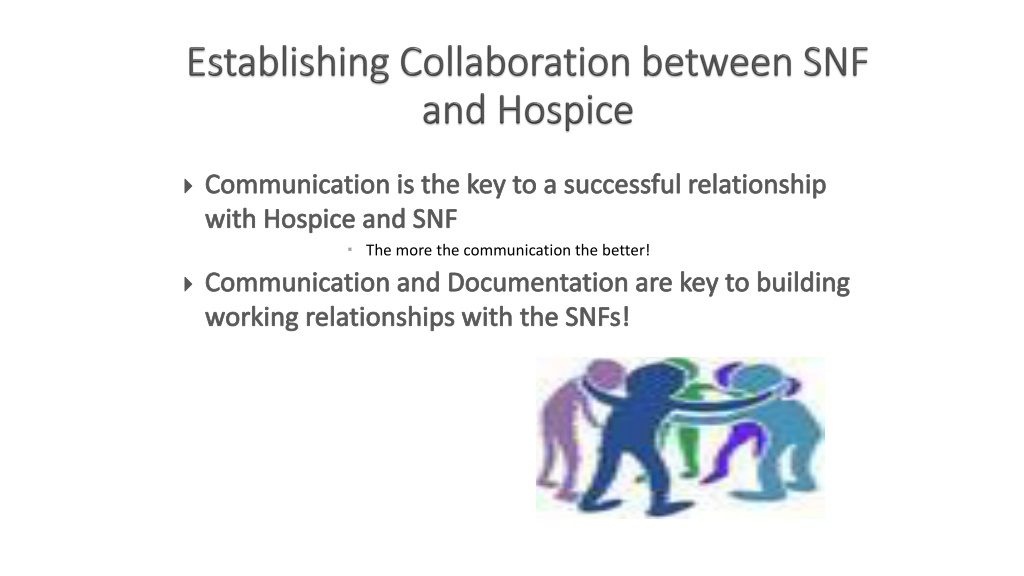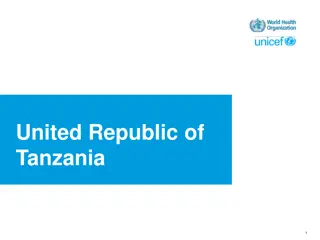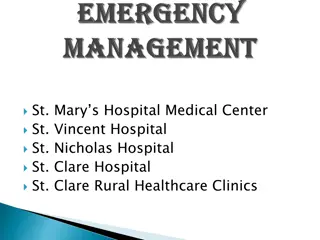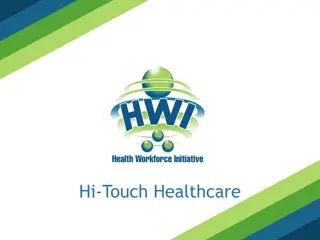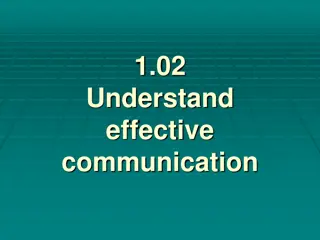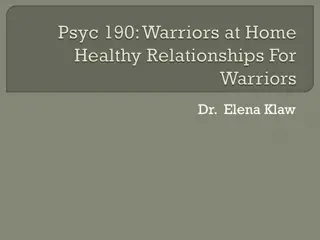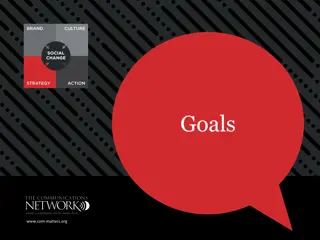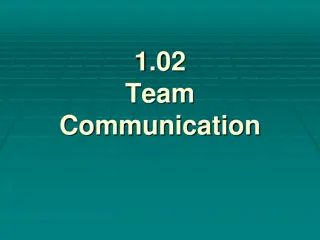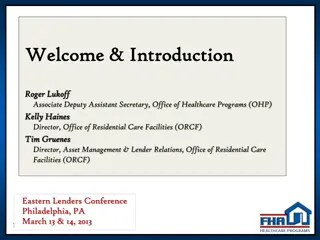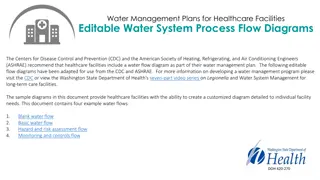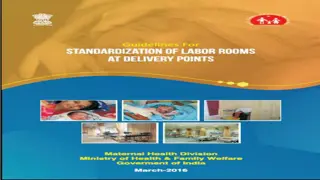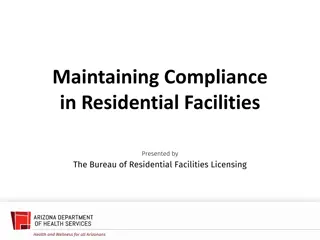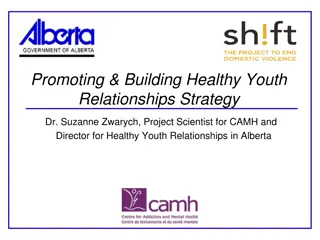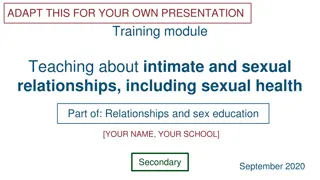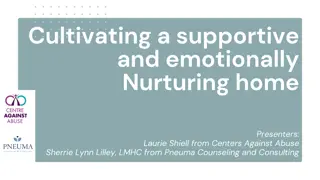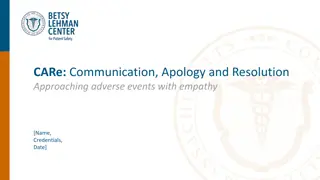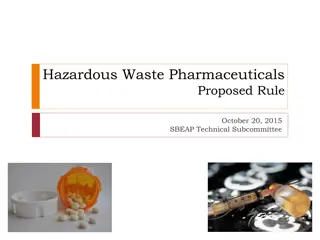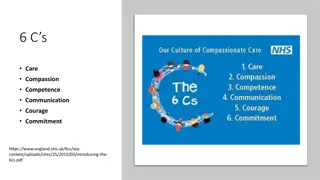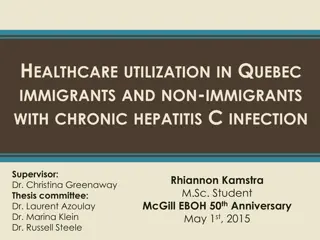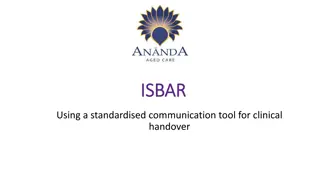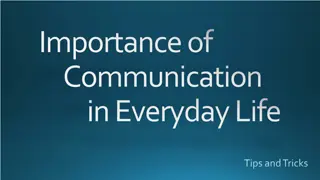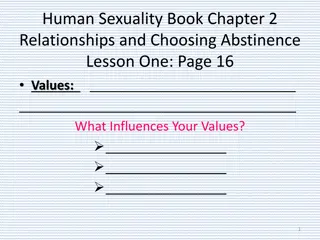Effective Communication Strategies for Building Relationships in Healthcare Facilities
Successful communication and documentation play a pivotal role in fostering relationships with Hospice and SNF facilities. This comprehensive guide emphasizes the significance of communication protocols, such as signing in, introducing oneself to staff, and leaving detailed notes for interdisciplinary teams. Strategies to enhance communication include increased visibility, regular phone calls to DPOA/proxy, and active participation in care coordination meetings. Effective communication practices are outlined for various healthcare professionals to ensure seamless collaboration and patient care in healthcare facilities.
- Communication strategies
- Healthcare facilities
- Interdisciplinary teams
- Documentation
- Relationship building
Download Presentation

Please find below an Image/Link to download the presentation.
The content on the website is provided AS IS for your information and personal use only. It may not be sold, licensed, or shared on other websites without obtaining consent from the author. Download presentation by click this link. If you encounter any issues during the download, it is possible that the publisher has removed the file from their server.
E N D
Presentation Transcript
Communication is the key to a successful relationship with Hospice and SNF The more the communication the better! Communication and Documentation are key to building working relationships with the SNFs!
How do we communicate in the Facilities? Sign into visitor log upon arrival and exiting facility- all disciplines Upon arrival, introduce yourself to the floor nurse, charge nurse etc.- every discipline should be receiving a report before seeing a patient. At the end of the visit, circle back to the floor nurse regarding a plan, assessment, comfort medications, additional medications etc- report will vary depending on discipline.
How will we increase communication in the facilities? After every visit, nurses, chaplains, and MSWs must ask to speak to the social worker, referral source, DON, resident care director etc. to discuss plan of care for the patient. If they are not available, please leave a note(Tufts Medicine Care at Home) sorry I missed you card) that you were present and stopped by to see them. Visibility is the key to increase referrals! Every discipline should be writing in the communication book in the patient room. Every patient should receive a book upon admission. Complete documentation log sheet after every visit- these sheets will be kept in a separate binder per facility unit. There are a few exceptions. Progress notes- to be used for recommendations and long notes. There should be 1 binder per unit.
How will we increase communication in the facilities? All nurses, chaplains and social workers will be calling DPOA/proxy after every visit. This is especially important at admission for introduction. If the DPOA/proxy is present at the visit, a call is not necessary. Please document the call in your notes. If a caregiver declines a phone call document in electronic record. Attendance at IDT/care coordination meetings at the facility are important! Please use a care coordination minutes form to be completed by nurse or designee that will be completed at meeting. This form increases collaboration with the facilities. One this form is completed(individual form for each pt), place in patient s chart or our binder.
Review of current SNF/ALF process Admission nurses: Speak to someone in the business office at time of admit. Complete VOR form and submit to business office. Please send an email to the liaison that this was completed. Liaison will follow up with business office that form was received. Admission nurse- please attach pharmacy card with VOR. At SOC: admission nurses, meet patient/family, assessment, discuss plan, and place communication book in the room(explain pt/family purpose of book Admission nurses will ensure there is a binder on the unit and place tab and paperwork in binder for new patient. If there is no binder, nurse will place binder on unit. All other disciplines- If there is no binder or documentation logs, please send urgent email to clinical manager. All subsequent visits: complete documentation log in hospice section of facility chart. Case managers: After every recertification, a new plan for treatment should be placed in hospice section of facility record. All medications should be reconciled and please make sure visits and orders match plan for treatment.
Printing of Documentation Amy Genoa will be printing CTI, NOE, consents and plan of care every Tuesday for new patients. Amy will begin to print paperwork for our current patients. She will place paperwork in a folder by her cubicle labeled by the facility. Case manager or liaison will pick up paperwork and place in patient s hospice binder or chart at facility. This will need to be completed by Thursday of that week. Amy will notify Kelli True and Hospice clinical manager if paperwork has not been picked up by Thursday afternoon. Amy will be printing off recertifications- plan of care and CTI as patient is recertifed. Hospice Clinical Manager will provide list of patients.
Summary of SNF/ALF initiative Documentation logs in hospice binder on nursing unit. Mandatory phone calls by nurse, chaplain and social worker after every visit if proxy/DPOA not present. Every visit- follow up with DON, referral source, Social worker etc with plan of care- communicate that you were present and in their building. Care coordination forms implemented to increase collaboration and integrated plan of care. Random audits by management to ensure process completed. Contact will be made to the facility and family within 1 hour from receiving referral. Same day admissions. It is everyone s responsibility to alert your supervisor if there are missing binders, communication books, documentation logs in the facilities or Lawrence/HPH.
